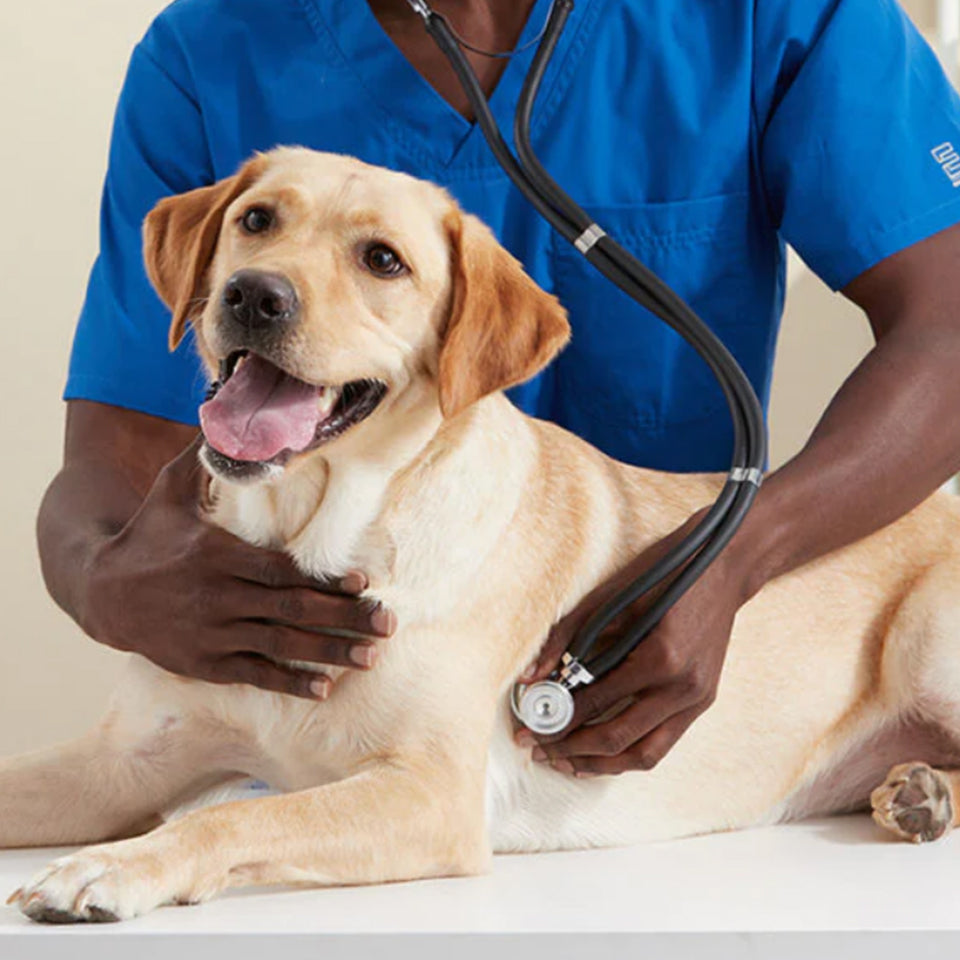What is a hereditary disease?
A condition induced by mutations (changes) in specific genes or chromosomes handed down from parent to the newborn. Hereditary syndromes can be inherited from one or both parents, and numerous members of the same family may be affected.

However, some authors believe that, hereditary syndromes come in a variety of forms where, disease is neither caused by homozygosity, which occurs when identical DNA sequences for a certain gene are inherited from both biological parents, nor is it caused by inbreeding. Dr. Bell emphasized that hereditary disorders are caused by the aggregation and propagation of certain disease liability genes. Breed-related harmful genes accumulate in a variety of ways, including direct selection for disease-associated phenotypes, linkage to selected features, carriage by popular sires, genetic drift, and, most critically, the absence of selection against deleterious phenotypes. "If we don't select for healthy parents to generate kids, we have no expectation of health in those offspring," Dr. Bell explained. "Choosing for sickness is the same as selecting for health, and we need to recognize that and pass it on to our breeder clients."
Understanding genetic illness in mixed-breed and purebred dogs and cats can lead to better therapies and customer care.
Insurance claims and centralized hospital systems track the most common disease presentations, assisting veterinarians in understanding the most common hereditary diseases. The most common disorders are complexly inherited and include several genes as well as environmental influences. In practice, genetic disorders should be recognized since they must be treated as chronic illnesses rather than episodic diseases.
Most Common Canine Inherited Disorders
Allergies are the most common hereditary disease in dogs, followed by hip and elbow dysplasia, inherited cancers such as lymphoma, hemangiosarcoma, mast cell tumor, and osteosarcoma, patella luxation, non-struvite bladder stones, hypothyroidism, mitral valve disease, inflammatory bowel disease, diabetes mellitus, retained testicles, and umbilical hernias.
Skin Allergic Disease
The most common disease presentations in clinical practice are allergic skin disease manifestations (e.g., chronic inflammatory otitis, recurring hot spots, pruritus). These symptoms are frequent in mixed-breed and purebred dogs, with some breeds being more prone than others. A study of atopic dermatitis in Golden and Labrador Retrievers found 47% heritability. A chromosome 28 fragment related with atopic dermatitis in German Shepherd Dogs was discovered in a molecular genetic investigation.
Hip dysplasia in dogs
Hip dysplasia is the most prevalent inherited musculoskeletal condition in both mixed-breed and purebred dogs. Small dogs with hip dysplasia do not typically exhibit the same level of pain and suffering as larger dogs, showing a size-weight link to clinical presentation. The ventro-dorsal view or distraction index is used to make a radiographic diagnostic.
Obstructive Brachycephalic Airway Syndrome
Brachycephalic obstructive airway syndrome (BOAS) is a breathing condition that affects short-snouted and "bully" breeds. Bulldogs, French Bulldogs, and Pugs are the breeds with the highest incidence. Dyspnea, exercise intolerance, heat intolerance, anomalous and increased respiratory sounds, cyanosis, syncope, and death are among clinical symptoms. Stenosis of the nares, an extended soft palate, everted laryngeal saccules, laryngeal collapse, and/or a hypoplastic trachea are all symptoms of this disease. Corrective surgery for dogs with considerable morbidity may involve rhinoplasty for stenotic nares, soft palate resection, and laryngeal saccule excision. Breeders should look for dogs with a defined muzzle, a normal-diameter trachea, and wide nostrils who do not have BOAS.
Mitral Valve Myxomatous Disease
Myxomatous mitral valve disease (also known as mitral valve endocardiosis) is most common in older toy and tiny dog breeds. It may cause heart disease in some breeds (e.g., Norfolk Terrier, Cavalier King Charles Spaniel) at an average age of 6.25 years.
Rupture of the Cranial Cruciate Ligament
Rupture of the cranial cruciate ligament is a common traumatic injury. Although it is not considered a hereditary disease, studies reveal that Rottweilers, West Highland White Terriers, Golden Retrievers, Yorkshire Terriers, Staffordshire Bull Terriers, and several mixed-breed dogs are at a higher risk.
Luxation of the patella
Patellar Luxation is a condition that is inherited in a complicated way. It is more frequent in short stature breeds, but numerous larger breeds have a high frequency of the condition as well. Patella luxation can be mild or severe, causing pain, instability, and arthritic changes. Weight management is a key element in lowering morbidity. Over time, affected dogs often develop from Grade 1 (patella laxity) to Grade 4 (permanent fixation out of the trochlea). To select against this illness, breeders must employ the breadth and depth of pedigree normality.
Cancers
The most common inherited malignancies in dogs are lymphoma/lymphosarcoma, hemangiosarcoma, mast cell tumor, and osteosarcoma. Malignant melanoma, squamous cell carcinoma, breast tumors, transitional cell carcinoma, and histiocytic sarcoma are other less common malignancies with genetic predispositions.
Cryptorchidism
With a reported 6.8% incidence, retained testicles are seen commonly in mixed and purebred dogs. It might manifest unilaterally or bilaterally. The retained testicle might be located either abdominally or subcutaneously. By 8 weeks of age, the testes should be present in the scrotum. Cryptorchidism is a sex-limited complexly inherited trait in which both males and females inherit the trait but only males may express it (similar to milk production in females).
Hypothyroidism
Hypothyroidism is a common condition in purebred and mixed-breed dogs. It is caused by autoimmune thyroiditis, in which thyroglobulin autoantibodies (TgAA) gradually destroy thyroid hormone producing tissue.
Cataracts
There are numerous reported breed-related inherited cataracts, and some breeds have multiple inherited cataracts that may be distinguished by age of start, progression, and lens position. Other causal mutations have yet to be identified.
Other Typical Genetic Disorders
Non-struvite bladder stones, elbow dysplasia, hepatic shunts, epilepsy, glaucoma, deafness, blindness, renal dysplasia, and Addison's disease are also prevalent.
Conclusion
Dogs with genetic abnormalities should not be bred. Because most of these genetic illnesses are complexly inherited, genetic risk for carrying disease-liability genes should be established on information of clinical sickness or normalcy in first-degree relatives of prospective breeding canines. Carriers of testable recessive disease-liability genes can be mated with normal-testing mates and substituted for breeding with normal-testing kids. Dogs having testable dominant disease-liability genes should be bred with normal-testing relatives.


